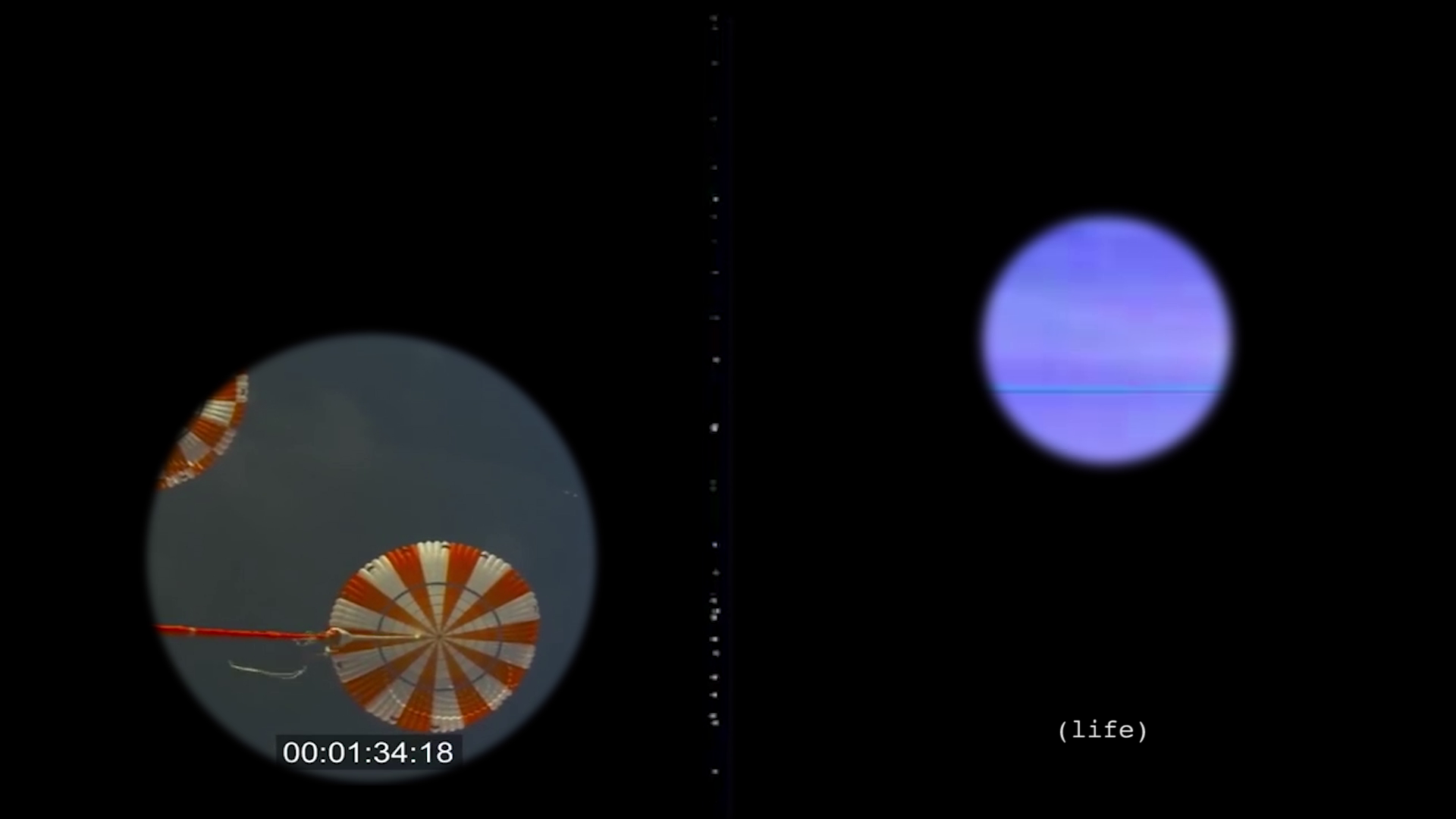
Starry Starry (2017) by Imyoung Zoo
CROSSROADS 2020 — program 3
take this as some kind of signal
program online August 24–September 30
program community partner: McEvoy Foundation for the Arts

Scintillating organic elegies, vegetable narrations and the dystopic dreams of seeds give way to fearful symmetries and speculations on the purgatorial subjectivities of our cybernetic cohabitants. The landscape becomes unreal. Do glitch, malfunction and machine depression suggest that new life is among us? Can it really be true that others take our place when we’re gone?
SCREENING: Wasteland No. 2: Hardy, Hearty (2019) by Jodie Mack; cada vuelta que da una cosa enrollada alrededor de otra (2019) by Bruno Varela; Neon Cortex (2019) by Bruno Varela; Tear Gas (2019) by Colectivo los ingrávidos; Angular Momentum (2019) by Michael Betancourt; Sacred Geometry (2018) by Anna Cecilia Seaward; Meridian (2019) by Calum Walter; Starry Starry (2017) by Youngzoo Im; It Was Summer When (2019) by Gloria Chung
TRT: 63 minutes

Wasteland No. 2: Hardy, Hearty (2019) by Jodie Mack
“Can it be true,” said the first leaf, “can it really be true, that others come to take our places when we’re gone and after them still others, and more and more?” “It really is true,” whispered the second leaf. “We can’t even begin to imagine it, it’s beyond our powers.” “It makes me very sad,” added the first leaf. They were very silent a while. (Felix Salten, “Bambi: A Life in the Woods”)
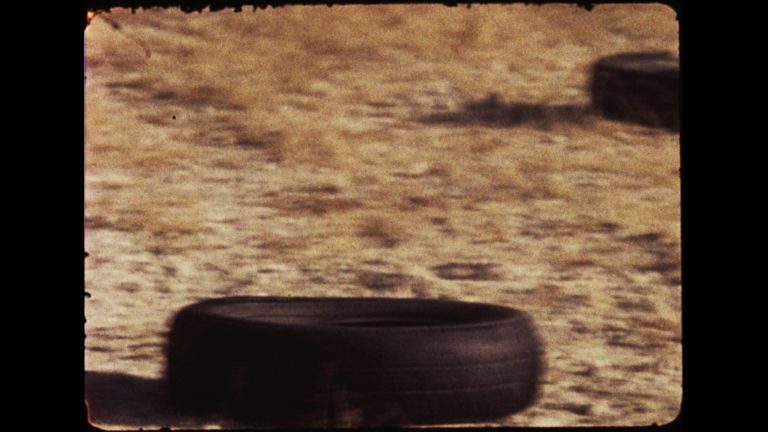
cada vuelta que da una cosa enrollada alrededor de otra (2019) by Bruno Varela
Mirages, heat strokes, entities that inhabit the mountain in the north bypass. Between valleys, border with the great mountains, observatory and crossing area. […] Every turn a thing rolls around another. […] Executed in a single movement, post-production in camera at the same time that it conjures and is in that trance of sun, mezcal, desire, ancestral clinamen, chaotic attractors in something that looks more like a ritual than filming. Execution, pulsation, drive, impulse, the cinema machine as an instrument, it is played, it is made love to, subtle and abrupt. Filmed with the hands, with the body. […] Almost fluid cosmic planes a single matter for all beings. Other spatialities and time intensities, such as insects, microbes, plants, stones, clouds. […] A gesture that invites you to do and not to look. (Bruno Varela)
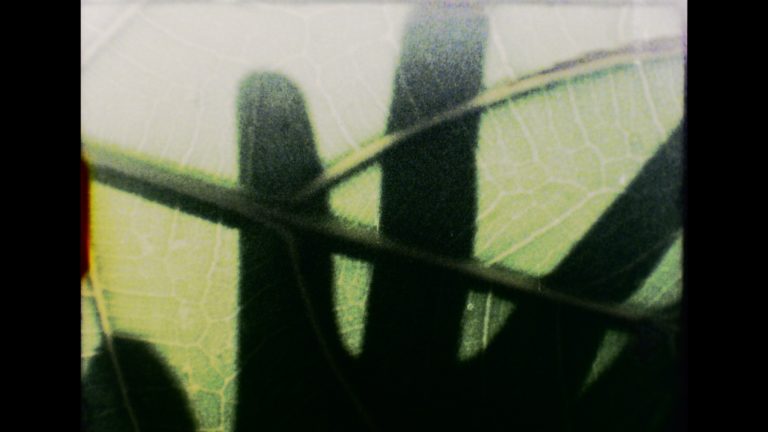
Neon Cortex (2019) by Bruno Varela
An exercise in random materialistic cinema, scrolls inhabited by diverse structures and temporalities collapse in the development and scanning, become embedded in a common memory and end up weaving a set piece of light and vapors. Speculative fiction, vegetable narration, dream of seeds. Neon Bark is a whole learning curve, a potential movie. We expect looks and screens and many more runoffs. S8 and 16mm digitally buckled. (Bruno Varela)
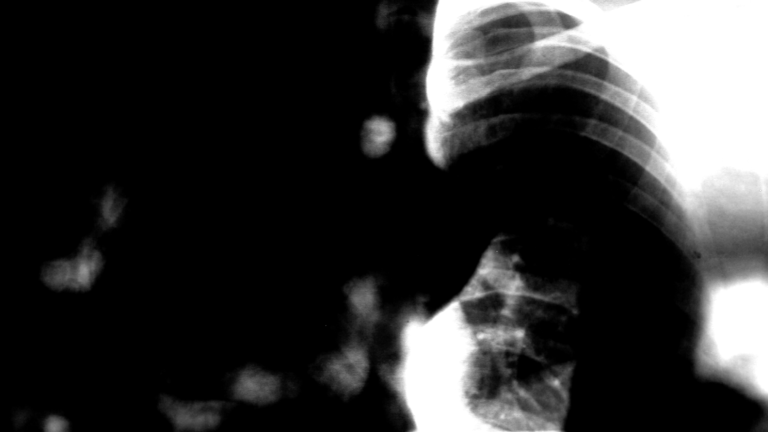
Tear Gas (2019) by Colectivo los ingrávidos
The Politics of Breathing: Tear gas. (Colectivo los ingrávidos)
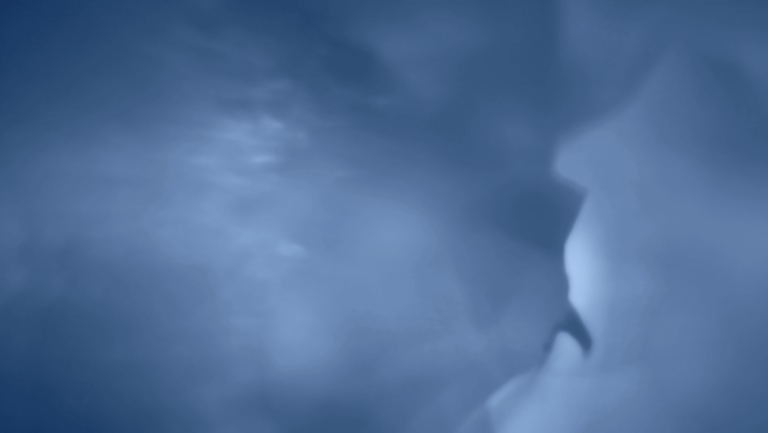
Angular Momentum (2019) by Michael Betancourt
Music by Jean-Philippe Feiss.
Cyanotype video. Centrifugal force pushing against the figure/ground distinction. An agglomeration of abstract light/shadow play, set in motion to evoke the transcendental, sublime experience created through a fusion of traditional, analogue in-camera photographic techniques with digital animation and compositing. This movie was created primarily with in-camera techniques, supplemented with minimal digital compositing to join the various shots together. Drawing on the visionary tradition of Lumia, it transposes traditional optical approaches to digital imaging. (Michael Betancourt)
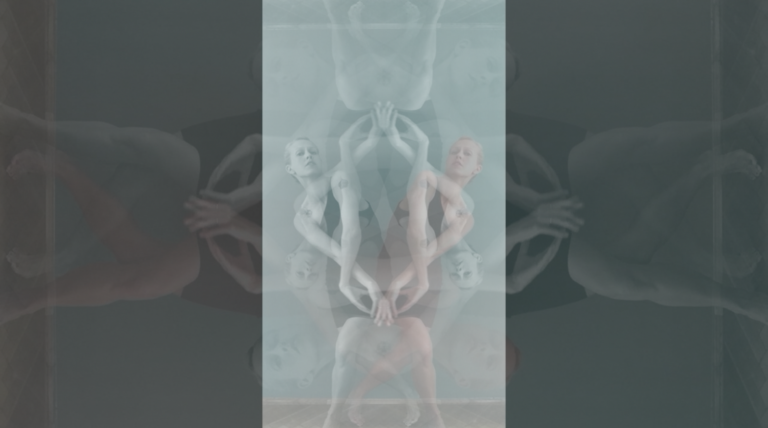
Sacred Geometry (2018) by Anna Cecilia Seaward
Sacred Geometry began as an improvisational reflection on grief, then grew to encompass a wider range of emotions and experiences. What came to surface was a visual representation of the body as a metaphysical conduit of energy, devoid of temporal and spatial demarcations, a body moving intuitively and finding comfort through symmetry and ancient symbols. (Anna Cecilia Seaward)
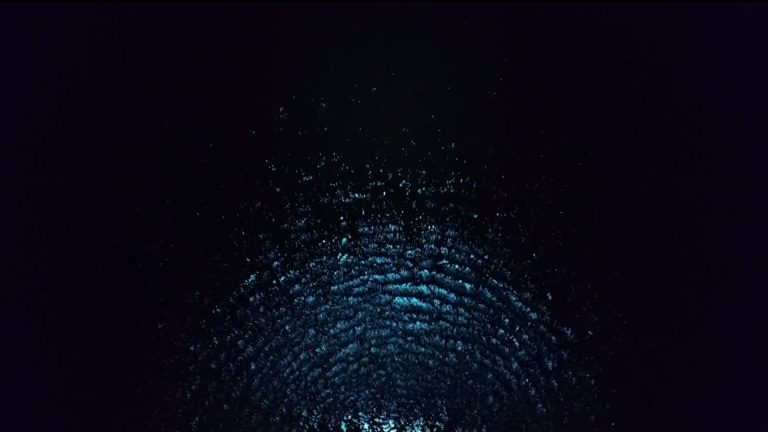
Meridian (2019) by Calum Walter
Meridian follows the last unit in a fleet of autonomous machines sent to deliver an emergency vaccine. The film shows footage transmitted by the machine before its disappearance, tracing a path that seems to stray further and further from its objective. Meridian is inspired by an event that occurred in Washington, DC on July 17, 2017, where an automated security robot from the company Knightscope was found floating in a fountain at the building it patrolled. It had plunged into the water while on a routine patrol, spurring speculation about whether the machine had chosen to end its life or if this was just a glitch in an otherwise reliable new technology. Perhaps more interesting than the fate of the machine, was the desire to see its death within a human context. (Calum Walter)
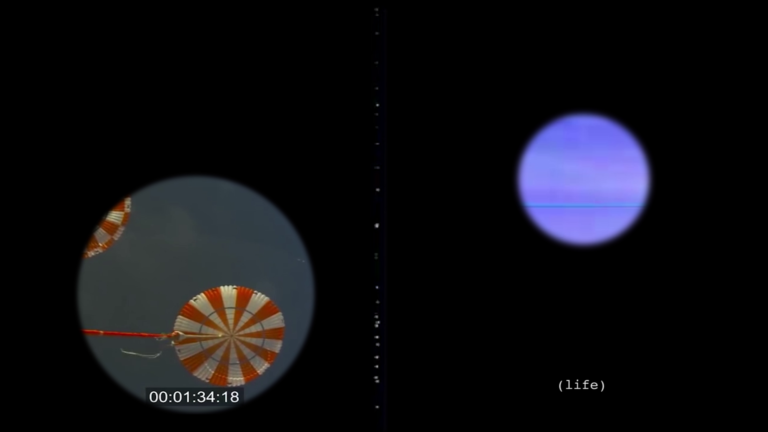
Starry Starry (2017) by Youngzoo Im
Starry Starry integrates various audiovisual material about the universe—such as Morse code, VHS glitch and footage of Apollo 13’s reentry of the Earth’s atmosphere—to create an odd hypnotic effect. The noticeable technique here is “looping.” Bizarre phrases that are like instructions at a meditation center (e.i. “The eye sees the nose/The nose sees the mouth/The mouth sees the navel”) are continuously repeated, starting over when it says “again.” The image displayed with the narration is Object Discovery (2016), a video of water drops on a running car’s window. What responds to the word “again” is not just the narration––a water drop that was running leftward starts to run rightward signaled by the word “again.” This reversed cycle is applied to the whole structure of this video. (Mun Hyejin)
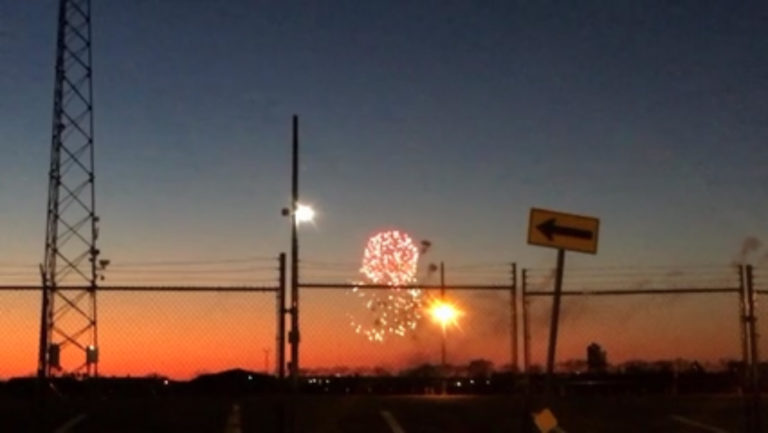
It Was Summer When (2019) by Gloria Chung
The surveillance network went down for two weeks.
From Into the Midst of Things (2017–2020), a series of 1–2 minute video vignettes which reflect on ways human life is existentially altered by technological advancements while questioning whether such landscapes are in the future or already upon us. (Gloria Chung)
Jodie Mack is an experimental animator who received her MFA in film, video, and new media from The School of the Art Institute of Chicago in 2007. Combining the formal techniques and structures of abstract/absolute animation with those of cinematic genres, her handmade films use collage to explore the relationship between graphic cinema and storytelling, the tension between form and meaning. Musical documentary or stroboscopic archive: her films study domestic and recycled materials to illuminate the elements shared between fine-art abstraction and mass-produced graphic design. The works unleash the kinetic energy of overlooked and wasted objects and question the role of decoration in daily life. Mack’s 16mm films have screened at a variety of venues including the Locarno Film Festival, the Toronto International Film Festival, the New York Film Festival, the Jeonju International Film Festival, and the Viennale. She has presented solo programs at the 25FPS Festival, Anthology Film Archives, BFI London Film Festival, Harvard Film Archive, National Gallery of Art, REDCAT, International Film Festival Rotterdam, Shenzhen Independent Animation Biennale, and Wexner Center for the Arts among others. Her work has been featured in publications including Artforum, Cinema Scope, The New York Times, and Senses of Cinema. She was the 2017/18 Roberta and David Logie/Film Study Center Fellow at the Radcliffe Institute for Advanced Study and a 2018/19 Fellow at the Film Study Center Fellow at Harvard University. She is a 2019 Artist In Residence at the Headlands Center for the Arts, and she is an Associate Professor of Animation at Dartmouth College.
Bruno Varela (Mexico) graduated from the Universidad Autónoma Metropolitana UAM with a degree in Comunicación but is self-taught in the mysteries of the audiovisual. Since 1992, he has dedicated himself to full-time film/video production, developing his process in the geographical and conceptual south of the continent—Oaxaca, Chiapas and Yucatan and Bolivia. The work has been shown in multiple forums, exhibitions and festivals in Mexico and abroad such as Guggenheim Museum; the Getty Research Institute; REDCAT Los Angeles; Frieze Projects/LUX, London; Cinematheque Ontario; the Tenth Havana Biennial; The Reina Sofía Art Center, Madrid; Ann Arbor Film Festival and more.
 Colectivo los ingrávidos (Mexico) is a film collective based in Tehuacán founded in 2012 to dismantle commercial and corporate audiovisual grammar and its embedded ideology. The collective is inspired by the historical avant-gardes and their commitment to using both form and content against alienating realities. Their methods combine digital and analog mediums, interventions on archival materials, mythology, social protests and documentary poetry. Their radical experimentations on documentary and cinematographic devices produce images, both visual and auditory, that are political possibilities in their own right. Their work has played at various film festivals including International Film Festival Rotterdam, RIDM Montreal International Documentary Festival, Images Festival, Punto de Vista, CROSSROADS, BFI London, Ji.hlava International Documentary Film Festival, Media City Film Festival, International Short Film Festival Oberhausen and Ann Arbor Film Festival. Their work was a part of the 2019 Whitney Biennial and the Bienal de la Imagen Movimiento in Buenos Aires.
Colectivo los ingrávidos (Mexico) is a film collective based in Tehuacán founded in 2012 to dismantle commercial and corporate audiovisual grammar and its embedded ideology. The collective is inspired by the historical avant-gardes and their commitment to using both form and content against alienating realities. Their methods combine digital and analog mediums, interventions on archival materials, mythology, social protests and documentary poetry. Their radical experimentations on documentary and cinematographic devices produce images, both visual and auditory, that are political possibilities in their own right. Their work has played at various film festivals including International Film Festival Rotterdam, RIDM Montreal International Documentary Festival, Images Festival, Punto de Vista, CROSSROADS, BFI London, Ji.hlava International Documentary Film Festival, Media City Film Festival, International Short Film Festival Oberhausen and Ann Arbor Film Festival. Their work was a part of the 2019 Whitney Biennial and the Bienal de la Imagen Movimiento in Buenos Aires.
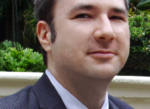 Michael Betancourt (US) is a research artist/critical theorist who works with movies and static imagery. His art is visually seductive and conscious of its digital origins, bringing the visionary tradition into the present: emphasizing aesthetics allows the viewer to find poetic meaning in everyday life. His movies have screened internationally at the Black Maria Film Festival, Contemporary Art Ruhr, Millennium Film Workshop and Experiments in Cinema, among other venues. His writing has been published in a variety of magazines, including The Atlantic, Make, Millennium Film Journal, Leonardo, Semiotica and CTheory. Among other texts, he is the author of The ____________ Manifesto and the books The Critique of Digital Capitalism, Glitch Art in Theory and Practice, Beyond Spatial Montage: Windowing.
Michael Betancourt (US) is a research artist/critical theorist who works with movies and static imagery. His art is visually seductive and conscious of its digital origins, bringing the visionary tradition into the present: emphasizing aesthetics allows the viewer to find poetic meaning in everyday life. His movies have screened internationally at the Black Maria Film Festival, Contemporary Art Ruhr, Millennium Film Workshop and Experiments in Cinema, among other venues. His writing has been published in a variety of magazines, including The Atlantic, Make, Millennium Film Journal, Leonardo, Semiotica and CTheory. Among other texts, he is the author of The ____________ Manifesto and the books The Critique of Digital Capitalism, Glitch Art in Theory and Practice, Beyond Spatial Montage: Windowing.
 Anna Cecilia Seaward (Hungary) is a performer, filmmaker, interdisciplinary artist, and independent scholar based in the Hudson Valley, NY. Her work is an investigation into how movement serves as a tool for healing and finding purpose, as well as how body memory is linked to ancestral wisdom. Her educational background in dance, philosophy, gender studies, yoga, and film form a unique multi-media platform for her to create from. Her perspective from growing up as an immigrant, her travels abroad, and her experience of grief also greatly contribute to her creative process.
Anna Cecilia Seaward (Hungary) is a performer, filmmaker, interdisciplinary artist, and independent scholar based in the Hudson Valley, NY. Her work is an investigation into how movement serves as a tool for healing and finding purpose, as well as how body memory is linked to ancestral wisdom. Her educational background in dance, philosophy, gender studies, yoga, and film form a unique multi-media platform for her to create from. Her perspective from growing up as an immigrant, her travels abroad, and her experience of grief also greatly contribute to her creative process.
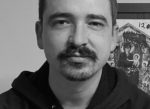 Calum Walter (US) is an artist working in sound and moving image. His work focuses on human and machine error, collective anxieties and the cultural moment as it is shaped by emerging and consumer technologies. His films have screened at the Berlinale, Sundance, Toronto International Film Festival, New York Film Festival, International Film Festival Rotterdam, Ann Arbor Film Festival, Rencontres Internationales Paris/Berlin, FIC Valdivia, Vienna Independent Shorts, Images Festival, Slamdance and the Hong Kong Arts Centre. He is a 2018 MacDowell Fellow and has received awards from the Harpo Foundation and the Illinois Arts Council. His work has been covered by Filmmaker Magazine, Reverse Shot and Cinema Scope Magazine. He lives in Chicago and teaches in the Department of Radio, Television and Film at Northwestern University.
Calum Walter (US) is an artist working in sound and moving image. His work focuses on human and machine error, collective anxieties and the cultural moment as it is shaped by emerging and consumer technologies. His films have screened at the Berlinale, Sundance, Toronto International Film Festival, New York Film Festival, International Film Festival Rotterdam, Ann Arbor Film Festival, Rencontres Internationales Paris/Berlin, FIC Valdivia, Vienna Independent Shorts, Images Festival, Slamdance and the Hong Kong Arts Centre. He is a 2018 MacDowell Fellow and has received awards from the Harpo Foundation and the Illinois Arts Council. His work has been covered by Filmmaker Magazine, Reverse Shot and Cinema Scope Magazine. He lives in Chicago and teaches in the Department of Radio, Television and Film at Northwestern University.
Youngzoo Im (South Korea) is an artist primarily works with video, along with painting, installation and publishing, to examine absurd beliefs and their underlying structures. Im’s focus lies on the similarities—rather than differences—of scientific thinking to superstition and religion are not compatible with the logic of the modern world. She interprets, borrows, and appropriates supernatural elements to create (quasi-)scientific images in her own way. Im received her MFA in Fine Art and BFA in Painting from Hongik University. Im’s solo exhibitions have been presented at venues including DOOSAN Gallery, New York; DOOSAN Gallery, Seoul; SANSUMUNWHA, Seoul; Space O’NewWall, Seoul and has been included in group exhibitions presented at diverse locations including Busan Biennale and the Seoul Museum of Art.
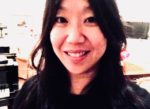 Gloria Chung (US) lives and works in New York. Her videos have been screened at festivals in the U.S. and internationally.
Gloria Chung (US) lives and works in New York. Her videos have been screened at festivals in the U.S. and internationally.